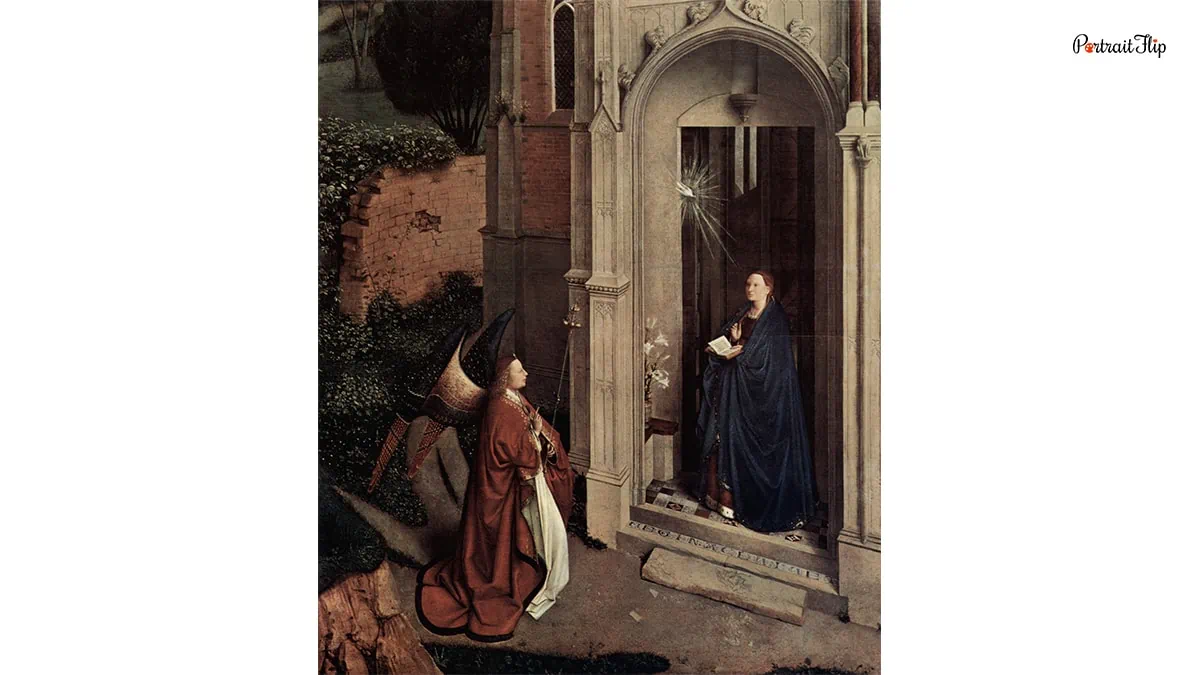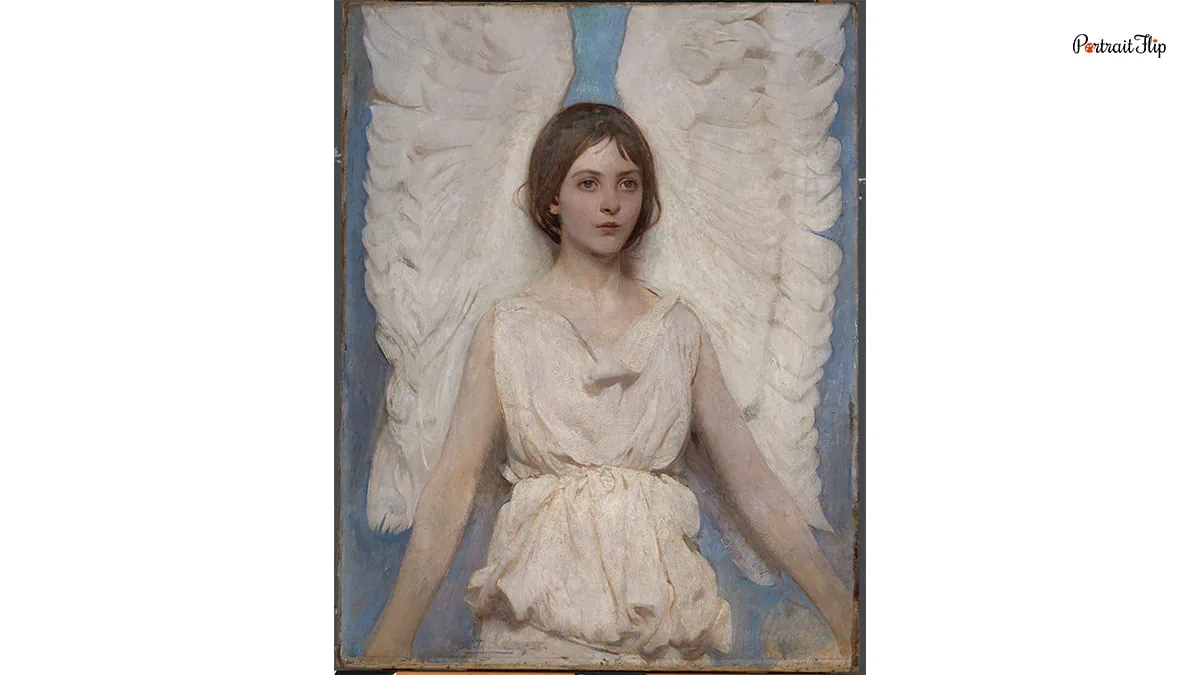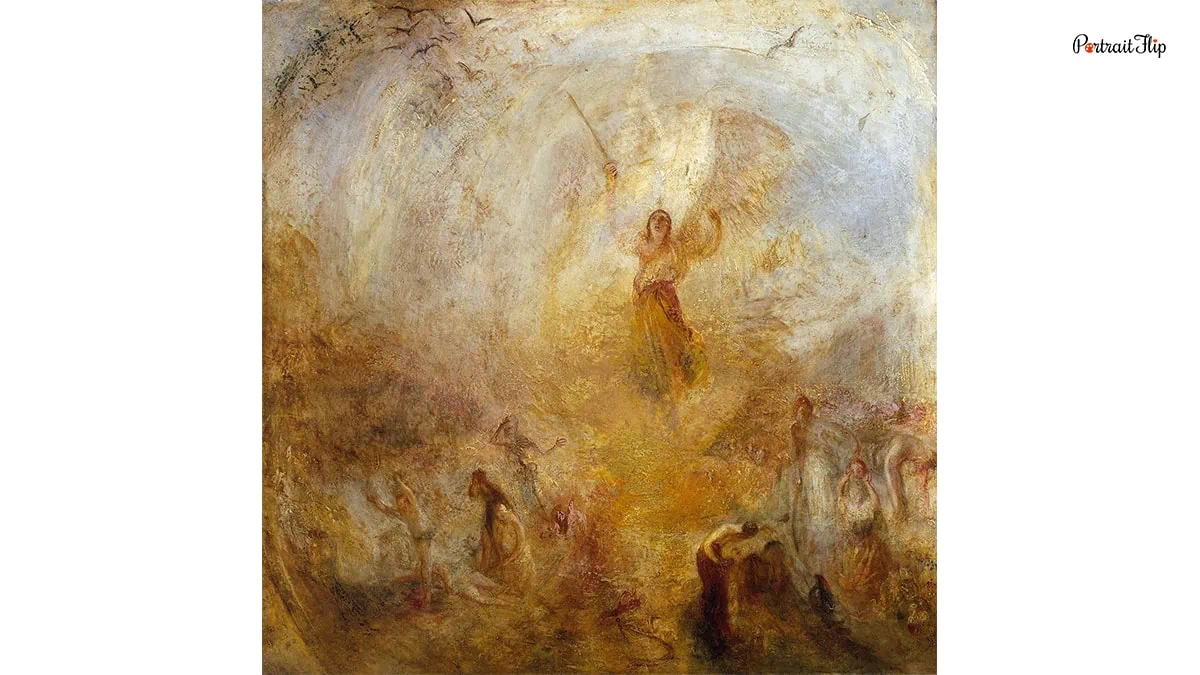Over hundreds of artworks were made depicting angels.
Most of them belonged to Jews, Christians, and Muslims, as angels play a key role in conveying God’s message to their respective prophets.
But the ones that’ve conquered the hearts of millions and are predominantly spoken about on the internet belonged to art patrons who practice Christianity.
If you look at the journeys of Michelangelo, Raphael, or J.M.W. Turner, you’ll realize how far they’ve brought some movement and stunned the world with their remarkable works.
What did they have in common? That’s the depiction of angels with a wide range of appearances.
Featuring an angel on artwork is an act of divinity, but it requires immense knowledge on subjects, and it could only be done if the artist is inclined towards Western culture and familiar with Biblical verses.
Angels have had a great influence on artists from the Renaissance and Baroque, as well as some from the 18th and 19th centuries, which is why we’re presenting some of the finest angel art ever created in history.
Let’s take a look at them!
Table of contents
- 1. The Sistine Madonna (1512) by Raphael
- 2. The Annunciation (1440-1445) by Petrus Christus
- 3. Angel (1887), by Abbott Handerson Thayer
- 4. The Conversion of Saul (1542-1545) by Michelangelo
- 5. Saint Francis of Assisi in Ecstasy (1595) by Caravaggio
- 6. The Triumph of Victory (1614) by Peter Paul Rubens
- 7. Jacob Wrestling with the Angel (1659) by Rembrandt
- 8. The Angel, Standing in the Sun (1846) by J. M. W. Turner
- 9. Vision After the Sermon (1888) by Paul Gauguin
- 10. L’Amour et Psyché, enfants (1890) by William-Adolphe Bouguereau
- Conclusion
- Frequently Asked Questions
1. The Sistine Madonna (1512) by Raphael

This Renaissance artwork held a significant position in angel art history. It was commissioned by Pope Julius II.
Those two adorable cherubs at the bottom are shown wondering, looking above at images in which Virgin Mary is holding infant Christ and St. Barbara and Pope Sixtus II stand either side of her.
The Virgin Mary standing on clouds holding her baby, looking at viewers, is nothing but solid religious visuals, which was then to be the heirloom of the church situated in Vatican City.
Pope Julius II shared close relationships with associates of the church; he learned the news of the Italian town of Piacenza joining the papal states, which prompted him to commission Raphael.
Raphael, being the greatest of greats, liked the offer and made this religious artwork, which became the world’s most famous angel painting.
(Also Read: Famous Italian Artists)
| Name | The Sistine Madonna |
| Date of Creation | 1512 |
| Creator | Raphael |
| Associated Movement | Renaissance |
2. The Annunciation (1440-1445) by Petrus Christus

Petrus Christus’ famous angel art is known for its exceptional background and storyline.
The scene features the Virgin Mary, who is shown standing at the door, welcoming the angel Gabriel, who wants to inform her about the birth of Jesus Christ.
The architecture fuels the depiction of two characters, where Gabriel is shown informing her that she will conceive a baby who’ll be a messenger of God.
It wasn’t the church where the Virgin Mary was shown standing, though it looked like one as Christ wasn’t yet born.
The architecture is a combination of Romanesque and Gothic and shows nothing but a transition to Christianity from Judaism.
This famous angel painting is as meaningful and detailed as the stories associated with Angel Gabriel, the Virgin Mary, and Jesus Christ.
The art demonstrates scenes from a bird eye or Christ perspective, where architecture hints at the transition in their religious beliefs.
| Name | The Annunciation |
| Date of Creation | 1440-1445 |
| Creator | Petrus Christus |
| Associated Movement | Renaissance |
(Suggested: 12 Paintings by Hieronymus Bosch)
3. Angel (1887), by Abbott Handerson Thayer

Thayer knew nothing but art, which brought innovations with a shift, sometimes going too far and sometimes making a limited change.
Eccentric in nature but loyal to art, Thayer drew this angelic artwork featuring his own daughter, Mary.
He portrayed her daughter with a solemn look and a background wholly covered by her wings
Perhaps to signify hope or spirituality through this depiction, which has always fascinated this American artist.
The idea behind this famous angel painting was to bring his thoughts onto canvas, as he strongly believed that women’s virtues should be desired over their bodies.
Thayer’s Angel is solo character art that convey a deeper message with limited composition.
| Name | Angel |
| Date of Creation | 1887 |
| Creator | Handerson Thayer |
| Associated Movement | – |
(Suggested: 12 Paintings By Raphael)
4. The Conversion of Saul (1542-1545) by Michelangelo

Michelangelo’s iconic work on angels remained hidden and away from the limelight during his lifetime.
Conversion of Saul demonstrates scenes from Catholic’s history as Saul, who, before getting baptized, was planning to kill thousands of innocent lives because their faith was in Christ.
Michelangelo, being a religious personality, drew this famous angel art, which featured Jesus Christ floating with a bunch of angels, directing Saul to the path of truth, i.e., Christianity.
A strong ray of light falls on the ground, which represents nothing but Saul’s conversion to Christianity preventing him from assassinating innocent lives.
Although Michelangelo picked it from religious texts and tales, the art appeared dramatic, with angels being the fictional characters.
Saul was a Hebrew who became Paul after accepting Christianity—to be precise, after admitting his own sins and choosing the path of God.
The whole representation was picked up from the Bible, and as per records and notions, this event is considered imperative in Christianity.
| Name | The Conversion of Saul |
| Date of Creation | 1542-1545 |
| Creator | Michelangelo |
| Associated Movement | Mannerism |
5. Saint Francis of Assisi in Ecstasy (1595) by Caravaggio

Caravaggio’s Saint Francis of Assisi was his first religious artwork after joining Cardinal Francesco Maria Del Monte.
It’s baroque art, but style and theme signify the Renaissance.
The art featured Saint Francis of Assisi, who is shown lying down, harmed and terrified because of the stigmata—bodily marks and scars
It’s a real life depiction, and the one who forwarded this event to others was his companion Theo.
Caravaggio’s art, considering the facts, exaggerates the scenes, as the angel next to Francis is shown with two wings, but in reality, a six-winged seraph appeared, who responsibly soothed the pain.
The popular art technique and style, Chiaroscuro, is being used for nothing but to amplify the existing tonality.
| Name | Saint Francis of Assisi in Ecstasy |
| Date of Creation | 1595 |
| Creator | Caravaggio |
| Associated Movement | Baroque |
Also Read: Skeleton With a Cigarette Smoking by Vincent Van Gogh
6. The Triumph of Victory (1614) by Peter Paul Rubens

This angel artwork signifies victory over evilness and wickedness—basically against all sorts of negativity.
The artist portrayed a warrior sitting and leaning backward over a bunch of dead bodies who happened to be his enemies.
A voluptuous angel appears and lays a crown on his head, representing an iconic victory, perhaps against those who opposed goodness in Christianity.
Drama was evident, as was chaos, which took place because a Christian warrior fought and won against all the odds.
The Triumph of Victory didn’t only cement a significant position in angel art history but was also considered a meaningful angel painting, representing nudity.
The angel draped in purple silk with an upper body, especially a naked breast, shook the art viewers. But she was shown crowing at him, which showed his victory over evil.
| Name | The Triumph of Victory |
| Date of Creation | 1614 |
| Creator | Peter Paul Rubens |
| Associated Movement | Baroque |
7. Jacob Wrestling with the Angel (1659) by Rembrandt

Rembrandt’s famous angel painting deserves immense love and attention as it depicts a scene after a brawl between Jacob and an angel.
The long brawl and argument turned out to be the biggest lesson in Jacob’s life.
Rembrandt, at the start of his career, was fond of religious art. This famous angel painting was a result of his admiration for biblical scenes that signified nothing but empathy and solidarity.
Angel artworks are known for their dramatic compositions, but this angel work is contrary to that notion.
It doesn’t embody complexity or exaggeration and demonstrates characters in their most realistic way.
Rembrandt showed the angel consoling and comforting Jacob the way it was shown because Jacob had a hip injury after the brawl; perhaps this could be a punishment after he realized he was scuffling with an angel, not a random wicked person.
| Name | Jacob Wrestling with the Angel |
| Date of Creation | 1659 |
| Creator | Rembrandt |
| Associated Movement | Baroque |
8. The Angel, Standing in the Sun (1846) by J. M. W. Turner

The famous angel painting is a fine creation of the Romanticism artist.
Dabbled into religious art, Turner, at the last phase of his career, ended up producing this meaningful angel art featuring Adam, Eve, Albel, and the angel (Archangel Michael), who was shown appearing from the center—the sky.
The tone of this angel painting is quite melancholy as it depicts muder scenes, which are packed with violence, death, and drama.
Turner showed Adam and Eve crying over the death of their son, Abel, who was stabbed by his own uncle.
Angel Gabriel is shown floating and appearing from the sky, which looks absolutely awestruck.
The angel in this art, appearing in the golden light with a flaming sword, defines the peace that will be brought to earth after she lands.
| Name | The Angel, Standing in the Sun |
| Date of Creation | 1846 |
| Creator | J. M. W. Turner |
| Associated Movement | – |
9. Vision After the Sermon (1888) by Paul Gauguin

Taking inspiration from biblical scenes, French artist Paul drew Jacob wrestling with the angels, who were on the verge of renaming him Israel.
Paul’s most famous angel art is abstract in nature—an art style that he opted for after moving away from naturalism.
The artist emphasized Angel and Jacob’s wrestling after the sermon, which was shown from a third perspective.
Paul’s angel painting was heavily influenced by Japanese woodblock prints that he had a lot of admiration for.
Rather than portraying accurate images, he chose to bring biblical characters onto canvas in a more symbolic and abstract manner.
Which resulted in a lot of praise and buoyancy coming his way from his peers and prominent figures.
| Name | Vision After The Sermon |
| Date of Creation | 1888 |
| Creator | Paul Gauguin |
| Associated Movement | Modern Art |
(Also Read: 11+ Realism Paintings)
10. L’Amour et Psyché, enfants (1890) by William-Adolphe Bouguereau

Bouguereau’s finest piece on Angel performed exemplaryly at every event, wherever it was displayed.
Heavily influenced by Greek mythology, the artist recreated the scene featuring Psyche and Eros.
There’s a lot of adoration between each other, which is evident in this famous angel painting.
The angel winged Cupid and butterfly winged Psyche shown on the cloud represented nothing but love, compassion, and innocence.
L’Amour et Psyche lacked drama, but emotions could strike one’s chords whoever would witness it.
The nudity or sex is demonstrated without being overtly sexual, which could tell us the maturity and impeccable knowledge of the artist with this subject.
| Name | L’Amour et Psyché, enfants |
| Date of Creation | 1890 |
| Creator | William-Adolphe Bouguereau |
| Associated Movement | Modern Art |
Conclusion
Demonstrating angels in art was quite a trend between the 14th and 17th centuries, especially in European art, where the majority of artists belonged to Christianity.
Taking Raphael or Michelangelo into consideration, these talents were fond of biblical scenes and mythological tales.
That brought them closer to crafting the world’s most famous angel paintings; perhaps that persuaded others, including those listed above, to produce fine angel art demonstrating different aspects of culture.
Art evolved over the years, but paintings of angels were at their peak during the Renaissance and Baroque periods.
As we all know, the Renaissance was born to revive cultural ideas and values, and there wouldn’t be a Renaissance without the demonstration of angels.
From American to French to Dutch to Italian, every genius contributed to making angel art thrive in the world of art.
Frequently Asked Questions
The Sistine Madonna by Raphael is the most famous angel painting.
Although Michelangelo created many biblical and angelic artworks, the one that brought abundant love and praise was The Conversion of Saint Paul.
No, they are two different angel artworks that depict the same scene from the Bible in two different ways.





